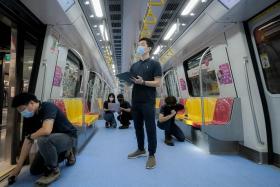Charcoal drawings, quirky book titles: TEL art you should not miss
The 11 Thomson-East Coast Line (TEL) MRT stations opening on Nov 11 will not only shorten journeys, they will also offer aesthetic experiences, with works of art by local artists.
From gigantic sculptures to trompe l’oeil (trick of the eye) charcoal drawings, each of the 11 stations has pieces inspired by the area the station is in, aiming to draw the attention of commuters.
On Wednesday and Thursday, The Straits Times visited each of the TEL stations for a preview of the works, commissioned by the Land Transport Authority under the Art in Transit programme.
The works were conceptualised nearly 10 years ago when the line was still in the planning stage.
Orchard MRT station, one of the busiest in Singapore, has one of the most dazzling pieces, created by photo-artist Mintio.
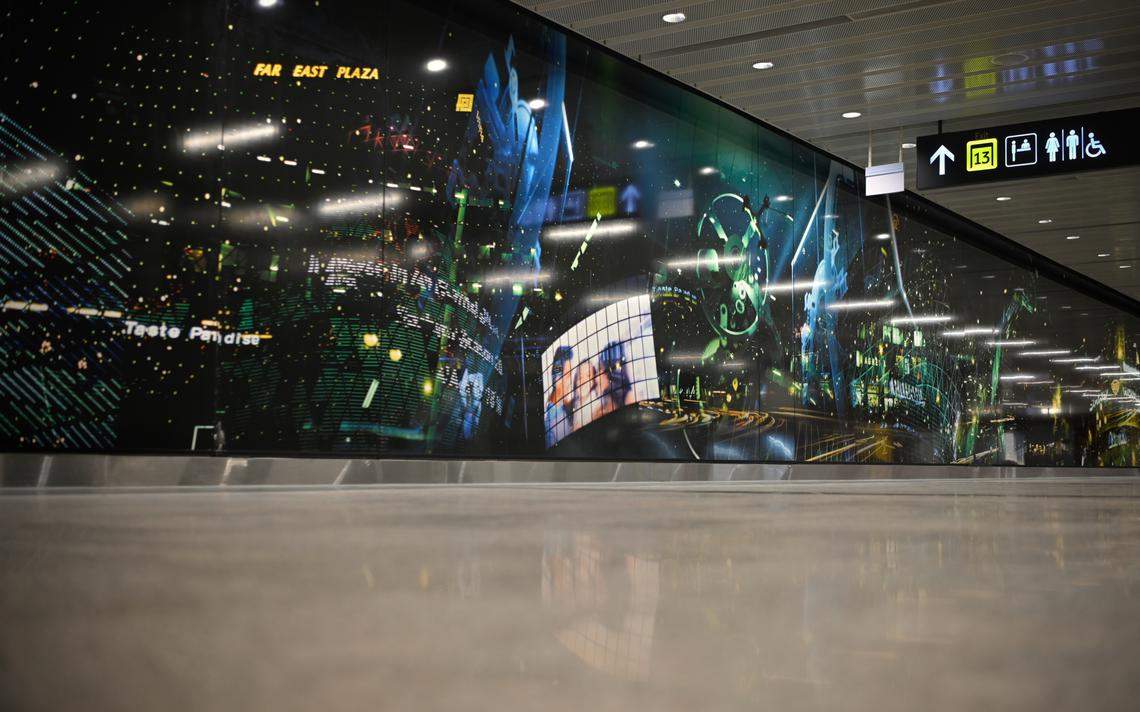
Her work, Scotts Road, is a panoramic photo taken from ground level, using a single roll of film with multiple points of exposure.
Spreading across the concourse level, it presents the lights of the shopping district in their full splendour, preparing commuters for the experience that awaits them when they emerge onto the street.
For a nugget of fun, Mintio has also created another piece, Orchard from ION Sky, shot from the highest point of Orchard Road, that is placed at the lowest level of the platform linkway.
This inversion of perspectives – the ground level view of Scotts Road at the higher concourse level and a bird’s-eye view of Orchard Road in the basement – adds to the topsy-turviness of Singapore’s busiest station – one with a total of 13 exits.
At Stevens MRT station, A Syllabus For Stevens transports commuters back to their school libraries.

Upon closer look, the books are marked with quirky and pun-filled titles, such as In search Of The Elusive, Or How To Find Missing Socks, Pop Tart by Andy Warthog – a reference to pop artist Andy Warhol – and Guide To Scoring A Date.
These reflect the humour and intelligence of the schoolgirls artist Shubigi Rao worked with.
Rao contacted students of Raffles Girls’ School for the project before the school moved to Braddell Rise, with the aim of capturing that “fragile little moment” of people’s lives before they lose their capacity for wonder and imagination when they are all grown up.
Commuters can peruse the spines to see which titles evoke their memories or make them smile.
“The Syllabus For Stevens is perhaps what students wished had been taught in schools,” Rao said.
At Maxwell MRT station, food takes the limelight, with the famous Maxwell Food Centre located so close to the station’s exit.
Artist Justin Lee, who grew up in the area, rendered this collage of a child eating an austere meal in front of an old hawker bulb decorated with a red double “xi” (Mandarin for joy), usually seen on joyous occasions.

The child is distinctively out of place in the modern world, drawn in the pointillist style in contrast to the computer graphic of the stool.
He is a reminder of a less-well-off time when people struggled to make ends meet, and his position in front of the double “xi” suggestive of a sumptuous banquet is meant to spark conversations about inequality, the value of food and how far Singapore has come as a nation.
Great World, Great Times by artist Deanne Ng harks back to Great World Amusement Park, which attracted Singaporeans from all walks of life until it closed in 1978.
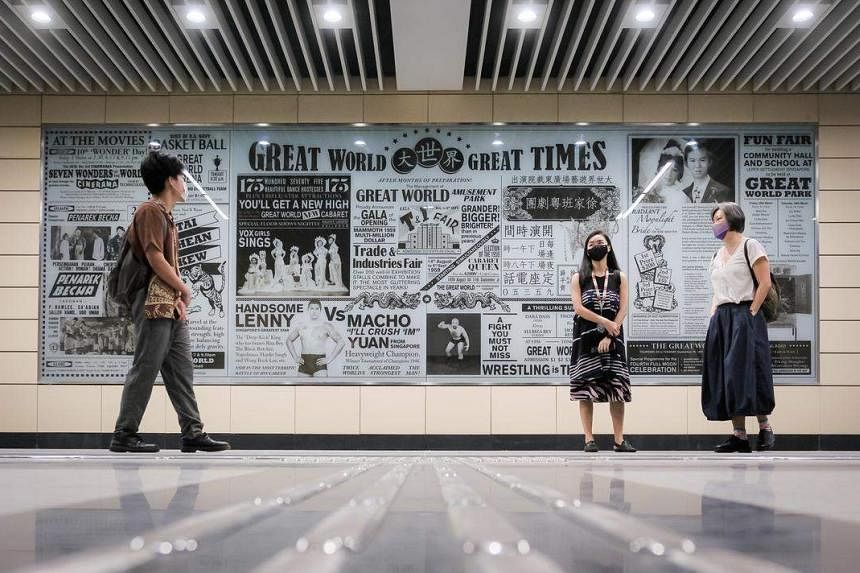
A medley of retro advertisements, the work includes old film posters, signage for cabaret performances and an announcement of an upcoming heavyweight wrestling match – relics of a bygone era of pre-Internet entertainment.
Ng painstakingly recreated these advertisements, getting a choral troupe to pose as cabaret girls and a student made up with faux chest hair to roar into the camera as a star wrestler.
There is even a photo of her parents, who were married in the 1970s, anchoring an article on a bridal competition. It is a reference to Great World Amusement Park’s erstwhile role as a place for matchmaking, where many young couples met to escape their parents’ scrutiny on dates.
The work at Napier MRT station is slightly different from the rest, created by the National Parks Board instead of artists for this station close to the Singapore Botanic Gardens.
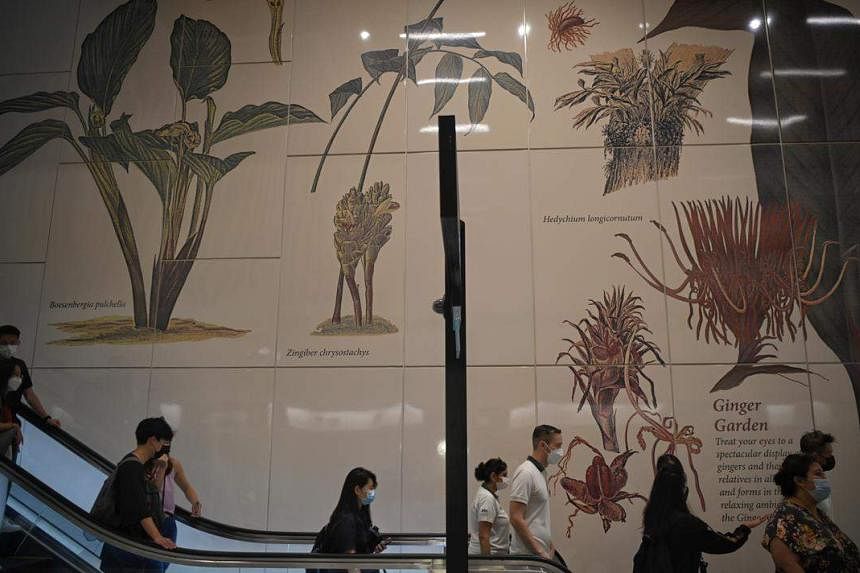
The many species of gingers, orchids and legumes fill almost the entire wall of the platform level and are digitally magnified versions of illustrations by late 19th and early 20th-century botanical artists James and Charles De Alwis.
Commuters can learn about the more than 20 species of plants at the four garden sections – ginger, orchid, legume and eco.
The illustrations were sourced from the National Archives and the Singapore Botanic Gardens’ collection, with the aim of showing that plants are not just a rich source of information for research but also aesthetically pleasing pieces of natural art in their own right.
Marina Bay MRT station in Singapore’s financial district is a more transitional space than most other stations, with financial workers hurrying by in suits to get to meeting places and offices in time.
Here, artist Tan Ling Nah has created multiple charcoal sketches of vaguely familiar architectural spaces – a back alley, a roof, a canal – that she has moshed together to give the space a surreal feel.
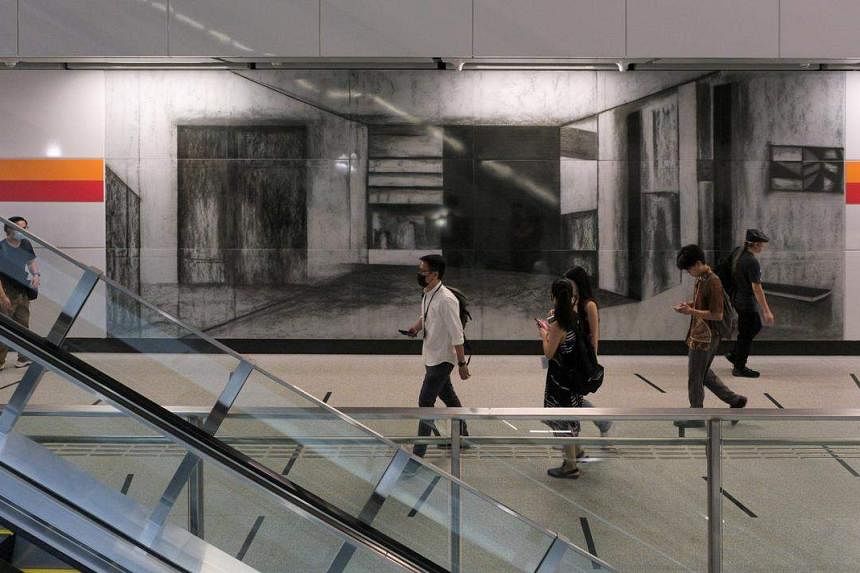
Tang said the places in her drawings are taken from the old financial district in Shenton Way, which she now transplants to Marina Bay, giving the new financial district continuity and blessing.
The life-scale of the charcoal drawings also create a trompe l’oeil effect – a trick of the eye that creates an illusion of an extension of space.
A steel sculpture by artist Twardzik Ching Chor Leng hangs ominously over the concourse level of Orchard Boulevard MRT station, resembling a human circulatory system. Like the MRT system, its function is to transport things, except that these are nutrients and oxygen, not people.
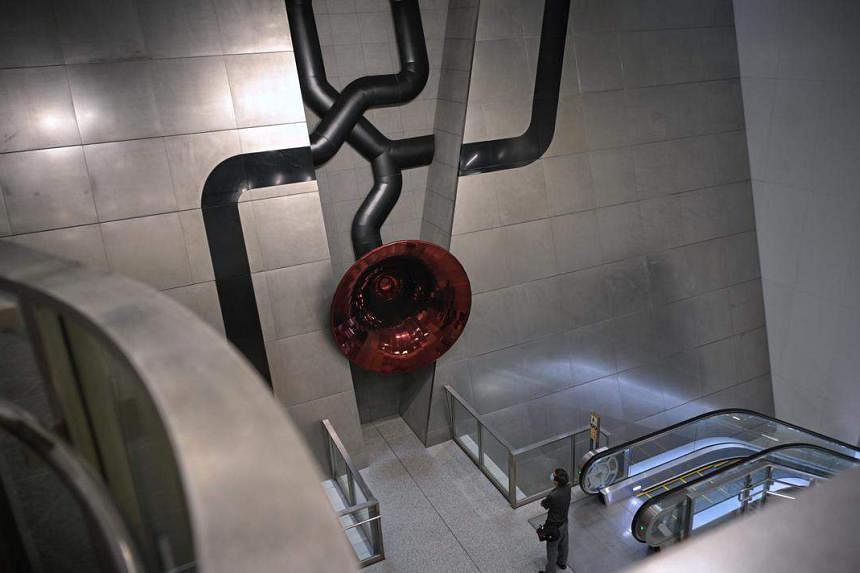
The red horn-like sculpture is an abstract representation of the force and dynamism of a pulsating heart and is connected to black pipes, which are vessels.
Twardzik said she drew inspiration from the hospitals in the area, including Gleneagles and Camden Medical. Look in the concave section of the wall to the left of the heart and there is also a bolt of lightning, representing a directive from the brain, giving the entire system life.
Get The New Paper on your phone with the free TNP app. Download from the Apple App Store or Google Play Store now


